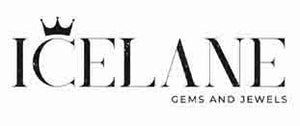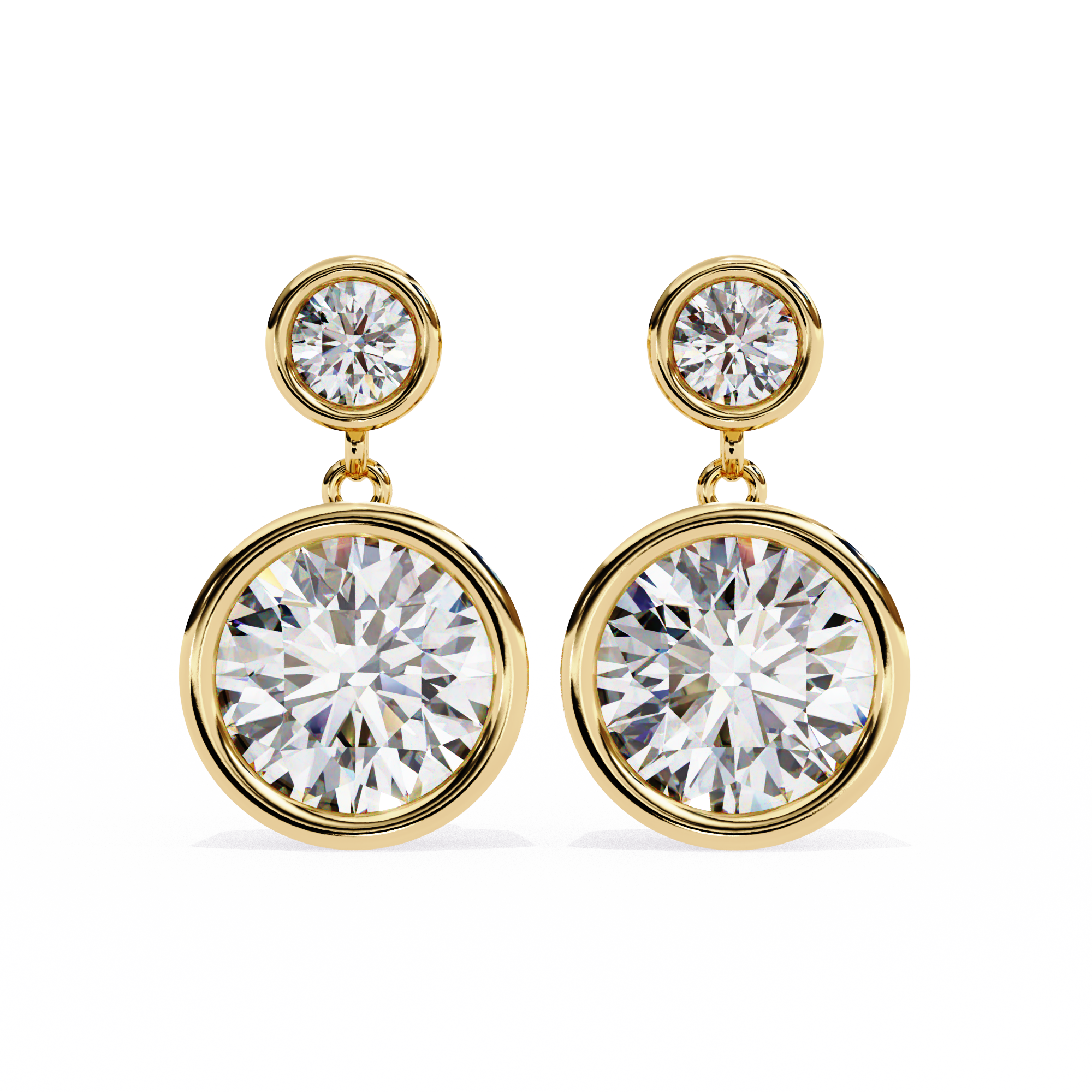Key Takeaways
- Lab-grown diamonds are real diamonds, identical to natural diamonds in composition, durability, and sparkle.
- Zircon is a natural gemstone, not to be confused with cubic zirconia. It has strong fire and brilliance but is softer than diamonds.
- Lab-grown diamonds are far more durable and suitable for everyday wear, while zircon is best for occasional jewelry.
- Zircon is much more affordable, but it lacks the longevity and resale value of lab-grown diamonds.
- Both gemstones have unique beauty — the right choice depends on budget, durability needs, and visual preference.
Overview
When looking for sparkling gemstones, lab grown diamonds and zircon are two options that often come up. Both are beautiful, bright, and cheap, but they are very different in terms of their makeup, how well they wear, and how much they are worth over time. Knowing these differences can help you pick the stone that works best for your needs, budget, and lifestyle.
What Is Zircon?
Definition and Origins
Zircon is a natural mineral that comes from the Earth's crust. It is one of the oldest gemstones known. It takes millions of years to form, and people mine it from places like Cambodia, Sri Lanka, Australia, and Tanzania. Zircon can be blue, clear, red, gold, or brown, among other colours.
You should know that zircon is not the same as cubic zirconia (CZ). CZ is a diamond simulant that was made by people, but zircon is a real mineral.
Key Physical & Optical Properties
- Chemical composition: Zirconium silicate
- Hardness: 6–7.5 on the Mohs scale
- Refractive index: High, giving it a strong sparkle
- Fire/dispersion: Often higher than natural diamonds
- Heat sensitivity: Can be damaged or lose color from high temperatures
- Toughness: Fair, meaning it can chip if hit hard
The brilliance and fire of zircon make it look good, especially in lighter colours like white (colourless) and sky blue.
Zircon Jewelry – Use & Allure
Zircon is popular in fashion jewellery and vintage-inspired designs because it shines brightly and is cheap.
- Fashion jewelry
- Vintage-inspired designs
- Birthstone jewelry (December)
- Engagement rings for budget-friendly buyers
Zircon is better for people who wear jewellery only sometimes or who take extra care of their jewellery because it is softer than diamonds.
What Is a Lab-Grown Diamond?
What It Means & How It’s Created
A lab grown diamonds is a real diamond that was made in a lab instead of being mined from the ground. It has the same:
- Carbon structure
- Hardness
- Brilliance
- Fire
There are two main ways to make diamonds in a lab:
· HPHT (High Pressure High Temperature): This process is similar to how diamonds form in nature.
· CVD (Chemical Vapour Deposition): This process uses gases that are rich in carbon to grow diamond layers.
Both methods make diamonds that look and act like natural diamonds.
Key Characteristics of Lab-Grown Diamonds
- Hardness: 10 on the Mohs scale (the hardest material on Earth)
- Durability: Excellent; ideal for daily wear
- Clarity & Color: Available in a wide range, often cleaner than mined diamonds
- Certification: IGI, GIA, and other accredited labs
- Eco-conscious choice: Lower environmental impact than mining
Lab-grown diamonds look and work just like mined diamonds, but they cost less because they are strong and brilliant.
Lab-Grown Diamonds in Jewelry – Why Should You Consider Them?
Lab-grown diamonds are quickly becoming the most popular choice for modern buyers because they offer:
- Better value — 40–70% less expensive than mined diamonds
- Real diamond performance — sparkle, durability, and longevity
- Ethical sourcing — no mining involved
- Future-proof investment — they last forever and can be passed down through generations
They are perfect for:
- Engagement rings
- Wedding bands
- Earrings you wear every day
- Necklaces and bracelets
If you want a diamond that will last a long time and is of real diamond quality, lab-grown diamonds are the best choice.
Read also: How to Care for and Clean Lab Grown Diamonds Jewelry at Home
Zircon vs. Lab-Grown Diamond – Direct Comparison
Here is a simple chart that shows the two things next to each other.
|
Feature |
Zircon |
Lab-Grown Diamond |
|
Material & Composition |
Natural zirconium silicate |
Pure carbon, real diamond |
|
Hardness |
6–7.5 Mohs |
10 Mohs |
|
Durability |
Moderate; chips easily |
Extremely durable |
|
Look & Sparkle |
High fire, strong brilliance |
Classic diamond brilliance & fire |
|
Cost |
Very affordable |
Higher cost, but far less than mined diamonds |
|
Everyday Wear |
Not ideal for daily wear |
Perfect for daily wear |
|
Certification |
Rarely certified |
GIA/IGI-certified |
|
Resale Value |
Low |
Moderate |
|
Heat Sensitivity |
High |
Low |
|
Ideal Use |
Occasional jewelry |
Engagement rings & everyday pieces |
Choosing Between Zircon and Lab-Grown Diamond – Key Considerations
How Often You Wear It and How Often You Use It
Daily Usage & Frequency of Wear
- If you need a stone for everyday wear, choose a lab-grown diamond.
- Zircon works best for occasional or special-occasion jewelry.
Budget
- Zircon is the most budget-friendly option.
- Lab-grown diamonds cost more but offer far greater longevity and value.
Longevity & Resale Value
- Zircon may show wear over time and scratches easily.
- Lab-grown diamonds last forever and maintain long-term beauty.
Visual Expectations
- Prefer classic diamond sparkle? Choose lab-grown diamond.
- Want intense, rainbow-like fire? Zircon can be visually striking.
Care Tips Specific to Each Stone
For Zircon Jewelry
- Avoid high heat — it may damage or alter the stone.
- Store separately to prevent scratches.
- Use a soft cloth and mild soap for cleaning.
- Avoid ultrasonic cleaners.
- Remove during physical activity or household chores.
For Lab-Grown Diamond Jewelry
- Clean with warm water and gentle soap.
- Ultrasonic cleaners are generally safe.
- Store separately to prevent scratching other jewelry.
- Lab-grown diamonds require minimal maintenance due to their toughness.
FAQs
1. Is zircon the same as cubic zirconia (CZ)?
No. Zircon is a natural gemstone, while CZ is a diamond lookalike that was made by people.
2. Are lab-grown diamonds real diamonds?
Yes. The only thing that sets them apart from mined diamonds is where they come from.
3. What makes zircon less expensive than lab grown diamonds?
Zircon is cheaper because it is softer and less durable.
4. Is it okay to wear zircon every day?
Not a good idea—it's easy to scratch or chip.
5. Do lab grown diamonds lose their sparkle over time?
No. Like mined diamonds, they stay brilliant.
6. Are lab-grown diamonds certified?
Yes, they can have GIA, IGI, or other lab certifications.
7. What kind of stone is best for engagement rings?
Lab-grown diamonds are better because they last longer, are stronger, and look exactly like mined diamonds.
About TheIceLane
At TheIceLane, we specialize in high-quality lab-grown diamond jewelry crafted for customers who value beauty, durability, and ethical sourcing. Our pieces are made to last a lifetime—sparkling with the brilliance and purity that only real diamonds deliver.
Explore the brilliance today at TheIceLane or contact us to customize your jewellery.
📞 +91-8107888600
📩 icelanehema@gmail.com
Chat with an expert on WhatsApp: +91 81078 88600
Author: Gaurav Rajani
Organization: TheIceLane
Expertise: Jewelry eCommerce, SEO, and Digital Branding for Lab grown diamond Businesses



